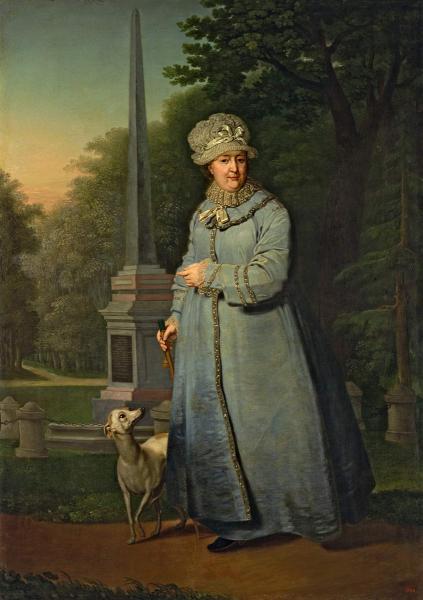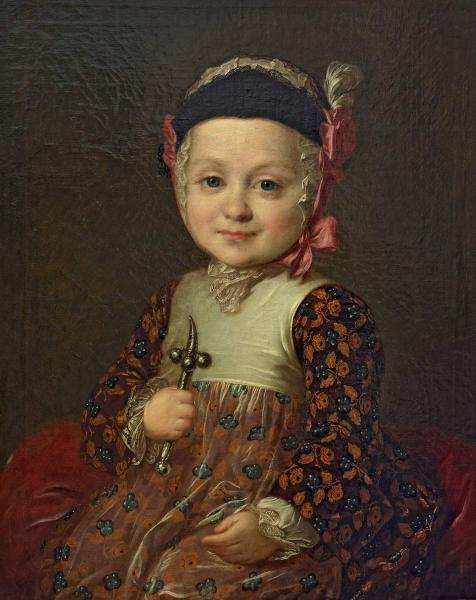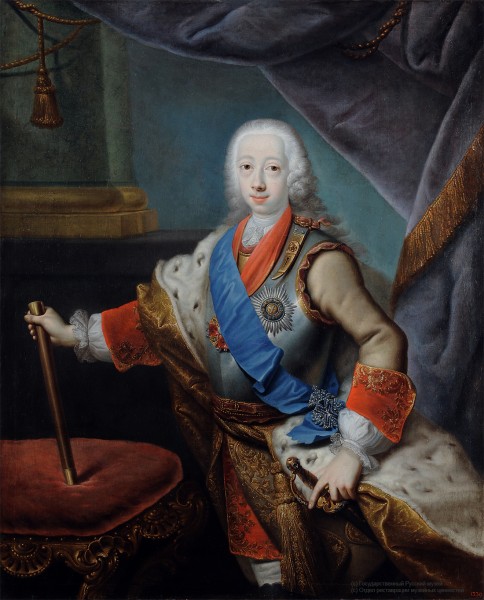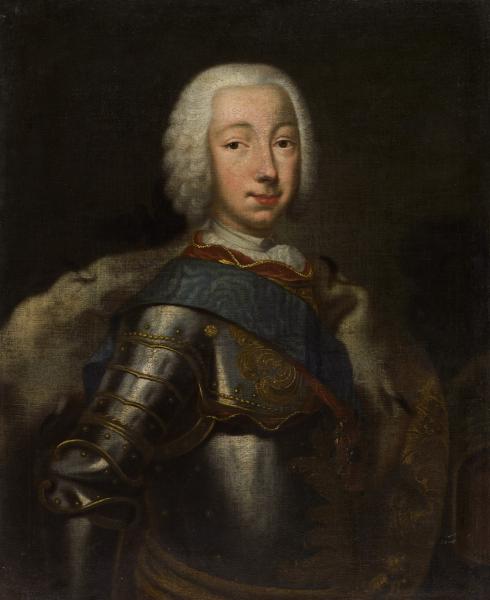The artist is Borovikovsky

A new understanding of the tasks of the portrait genre, distinguishing Borovikovsky from his predecessors, marks the “portrait of Empress Catherine II for a walk in the Tsarskoye Selo Park” – the first example of a chamber interpretation of the image of the sovereign. The artist introduced Catherine the Great “at home”, in a salop and a cap. An elderly lady, the “Kazan landowner”, as the Empress liked to call herself, slowly walks along the alleys of the Tsarskoye Selo Park, leaning on a cane. Next to her is a devoted dog, an English leftist.
From the memoirs of Prince Alexander Golitsyn it is known that Catherine did not pose an artist. He could see her while walking and at the exits in the palace. But this was not enough. Therefore, the face of the empress is devoid of individual features and is little like her canonical images. For the portrait, the artist in the empress’s dress posed her favorite indoor servant (chamberlain) Mary Pypsykhina. The sovereign did not like the portrait, but nevertheless it was widely used in repetitions and copies. Catherine the Great in the country and the world. SPb, 2017. With. 35. The original version (with Chesmenskaya column in the background) 1794 – in the GTG. The portrait is engraved by n. And. Utkin (1827).
Ekaterina II (Great; 1729-1796)-nee Princess Sofia Augustus Frederick the Angalt-Tserbst. Born in the German city of Stetin. In 1744, she arrived in Russia as the bride of Grand Duke Peter Fedorovich, the future Emperor Peter III. In the same year she accepted Orthodoxy with the name of Ekaterina Alekseevna and was married to Peter Fedorovich in August 1745. In 1754 she gave birth to an heir, future emperor Paul I. She did not work out with her husband, and Peter III intended to send his wife to the monastery. In the summer of 1762 she headed the guards and overthrew Peter III, becoming an empress. In the early years of government, it adhered to politics "enlightened absolutism", But after the peasant war, led by Emelyan Pugachev (1773–1775) and the great French bourgeois revolution (1789), she was forced to tighten the regime. Woned the victorious wars with Turkey (1768–1774; 1787–1792) and Sweden (1788–1790). During its reign, Russia included Crimea (1783), North Black Sea region, Baltic states, eastern parts of Poland, Aleutian Islands, Russian settlements in Alaska were created, Eastern Georgia was taken under patronage. The prestige of Russia in Europe has grown many times. Olga Savenkova. Exhibition catalog in Malaga "The Romanov dynasty". 2017. With. 229.


